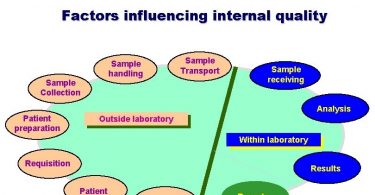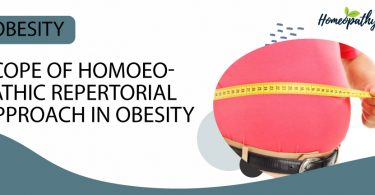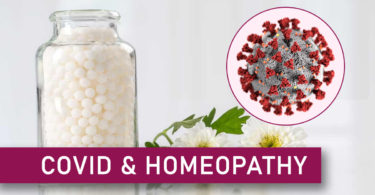
Abstract-
Homoeopathy is a holistic system of medicine where we treat the sick. But various conditions like trauma, trigeminal neuralgia, post-surgery pains, labour pain, dental pain, endometriosis, dysmenorrhoea, migraine, cancer pains may require palliative care. The purpose of this article is to enlighten the scope and future perspective of homoeopathy in pain palliation care. Homoeopathy may become a valuable treatment in palliative care to provide relief and comfort to the dying patient, and therefore the fear of death may reduce and the family may be better prepared for the bereavement.
According to H.A. Roberts, in incurable conditions, the administration of the similar remedy almost always ameliorates the situation, at least for three to four days, and usually for a long period. Then, one may have a return of symptoms, when the indicated remedy will be called into use again.
Keywords- homoeopathy, palliative care, palliation, cancer, quality of life.
Abbreviations- non-steroidal anti-inflammatory drugs (NSAIDs), quality of life (QOL)
Introduction-
Homoeopathy is often overlooked as a modality for pain management. However, it deserves to be a first-line treatment due to its safety, effectiveness, and cost-effectiveness. The database of the social security system in France, where citizens can choose a homoeopathic or conventional family doctor, shows that the former modality provides comparable results in pain management while significantly reducing the use of conventional painkillers. A large-scale review of the German drug safety database has revealed a miniscule number of adverse events. Finally, resistance to the use of homoeopathy—based on the mistaken notion that it contains nothing but water—is addressed by citations from the newly emerging field of ultrahigh dilution physics. Homoeopathic medicines must be customised to the individual patient in chronic conditions. Yet, a severe acute trauma can respond to the same homoeopathic medicine in nearly all individuals. While homoeopathic medicines are rarely tested against conventional painkillers in a head-to-head trial, certain research studies show that homoeopathic medicines can enhance healing for those already on conventional medications and can reduce pain in a condition such as a fracture for which effective drug treatment is lacking1.
Body of article-
In a large-scale study in France, where national health insurance covers homoeopathic as well as conventional primary-care doctors, the former prescribed fewer opioids (and half as many nonsteroidal anti-inflammatory drugs [NSAIDs]) for musculoskeletal disorders while providing better results in terms of pain reduction and quality of life. Further, there is some evidence to suggest that homoeopathy can work faster than conventional pain medications or reduce the need for them,3,4 without danger of dependence or withdrawal symptoms.5 There is also research to suggest that homoeopathy can work better than placebo in reducing pain, for example from endometriosis,joint pain and stiffness,7 and hemorrhoids.8
In one large study, Germany’s drug safety database was searched for adverse reports on >300 million doses of homoeopathic and anthroposophical drugs (similar to homoeopathy). There were only 486 reports of adverse events, of which only 46 were verified as serious.9
Homoeopathy’s mechanism of action is currently being revealed by studies in the newly emerging field of ultrahigh dilution physics. In one scenario, nanoparticles of the original medicinal substance 10attract water molecules to form liquid crystal structures in the dilution water, which in turn convey information that triggers a homoeostatic reaction in the body.11 In another, coherent domains are formed “among the molecules of the water-alcohol solvent, as predicted by quantum electrodynamics.”12,13 The nano-dose levels that persist in homoeopathic medicines are comparable to the levels at which the body’s hormones and cell-signaling agents operate. These two qualities of homoeopathy—the active ingredient being present only in nanoparticles and the mechanism of action based on conveying information rather than its medicinal substance—give homoeopathic medicines their unique qualities: the patient needs less and less of them over time; they do not create dependency or withdrawal; they do not interact with other medications; and they can heal other health conditions at the same time in addition to the chief complaint, that is, they provide side benefits instead of side effects.
Any cancer patient carries the most common symptom “pain” along their journey from pre diagnosis, through treatment and even when in remission. It is enervating symptom, restraining patient’s physical and psychological states as well as social wellbeing. It is reported that 67% of cancer patients find their pain upsetting, and the uncontrolled pain is now well recognised as the key promoter of the legalisation of the physician assisted suicide.
More than 2 million new cancer cases are added every year in India. Of these 60 to 80% patients are present in advanced stage of the disease and approximately 60% patients require only pain and palliative care, but unfortunately only 28% of the patients get palliative care and pain relief. The number of cases with cancer pain is increasing rapidly every year. It has been a cause of endemic concern for all to relieve cancer patients from their pain, thus there is an urgent need of alternative approach which can be resolved by homoeopathy as an accompaniment on to conventional treatment. The two major problems are faced by people at the end of life: (1) Quality care that does not reach enough to people and (2) the rising cost of health care over preceding decades that have imposed a substantial financial burden on patients, families and the healthcare system. These two major problems may be mitigated by homoeopathy and may become a valuable treatment in palliative care for patients in cancer pain and in their end of life. Homoeopathy may well integrate with standard oncologic care to improve patient outcome, including symptom burden, quality of life (QOL), and end of life outcome, all achieved with low associated cost. In “The Science of Homoeopathy”, the author Dr Vithoulkas says, “the event of death is a crucial point of transition which can be as important to the conscious growth of an individual as any other crisis occurring during life. For this reason, homoeopathy plays a very important role
Conclusion– Pain is a common companion of patient receiving palliative care in cancer and at the end of life. Cancer pain is multifactorial and complex. It’s impact can be devastating, with increased morbidity and poor quality of life, if not treated adequately. Cancer pain management is a challenging task both due to disease process and due to treatment related side effects, therefore it requires a holistic approach which can be covered by homoeopathy remedies.14.
References-
1.Lennihan B,Homoeopathy for Pain management, Alternative and Complementary Therapies,Vol.23, No.5,Mary Ann libert Inc. Publishers ,1/Oct./2017.
2. Rossignol M, Begaud B, Engel P, et al. Impact of physician preferences for homoeopathic or conventional medicines on patients with musculoskeletal disorders: Results from the EP13-MSD cohort. Pharmacoepidemiol Drug Saf 2012;21:1093–1101. Crossref, Medline, Google Scholar
3. Friese KH, Kruse S, Moeller H. The homoeopathic treatment of otitis media in children—Comparisons with conventional therapy. Int J Clin Pharmacol Ther 1997;35:296–301. Medline, Google Scholar
4. Robertson A, Suryanarayanan R, Banerjee A. Homoeopathic Arnica montana for post-tonsillectomy analgesia: A randomised placebo control trial. Homoeopathy 2007;96:17–21. Crossref, Medline, Google Scholar
5. American Pharmacists Association. Handbook of Non-Prescription Drugs, 15th ed. Washington, DC: American Pharmacists Association, 2006. Google Scholar
6. Teixeira MZ, Podgaec S, Baracat EC. Potentized estrogen in homoeopathic treatment of endometriosis pelvic pain: A 24-week, randomized, double-blind, placebo-controlled study. Eur J Obstet Gynecol Reprod Biol 2017;211:48–55. Crossref, Medline, Google Scholar
7. Karp JC, Sanchez C, Guilbert P, et al. Treatment with Ruta graveolens 5CH and Rhus toxicodendron 9CH may reduce joint pain and stiffness linked to aromatase inhibitors in women with early breast cancer: Results of a pilot observational study. Homoeopathy 2016;105:299–308. Crossref, Medline, Google Scholar
8. Das KD, Ghosh S, Das AK, et al. Treatment of hemorrhoids with individualized homoeopathy: An open observational pilot study. J Intercult Ethnopharmacol 2016;5:335–342. Crossref, Medline, Google Scholar
9. Jong MC, Jong MU, Bears EW. Adverse drug reactions to anthroposophic and homoeopathic solutions for injection: A systematic evaluation of German pharmacovigilance databases. Pharmacoepidemiol Drug Saf 2012;21:1295–1301. Crossref, Medline, Google Scholar
10. Chikramane PS, Suresh AK, Bellare JR, Kane SG. Extreme homoeopathic dilutions retain starting materials: A nanoparticulate perspective. Homoeopathy 2010;99:231–242. Crossref, Medline, Google Schola
11. Bell I. Pursuing the biological basis of homoeopathic remedy response. Online document at: https://youtu.be/U8lUZRc8-DU Accessed March 15, 2017. Google Scholar
12. Sorrentino L, Piraneo S, Riggio E, et al. Is there a role for homoeopathy in breast cancer surgery? A first randomized clinical trial on treatment with Arnica montana to reduce post-operative seroma and bleeding in patients undergoing total mastectomy. J Intercult Ethnopharmacol 2017;6:1–8. Crossref, Medline, Google Scholar
13. Marchettini N, Del Giudice E, Voeikov V, Tiezzi E. Water: A medium where dissipative structures are produced by a coherent dynamics. J Theor Biol 2010;265:511–516. Crossref, Medline, Google Scholar
14.Sachdeva J, Dey JK, Homoeopathy in cancer pain palliation and end of life with future perspective,Thieme medical and scientific publishers pvt limited 2019,95.
15.Lennihan B, Homoeopathy for pain management, Alternative and complementary Therapies,vol 23, 1-oct-2017, No.5
About Author
1.Dr Yashveer Singh, M.D (Hom.),Reader, State K.G.K. HomoeopathicMedical College and Hospital, Moradabad(U.P.).
2. Dr Mukesh Solanki, M.D (Hom.),PGDHR, Medical officer,Homoeopathic Chikitsa Vibhag, Govt. of Rajasthan
3.Dr Chitralekha Tiwari,M.D.(Hom.),Assistant Professor, Aarogya Homoeopathic Medical College& Hospital,Jaipur.





